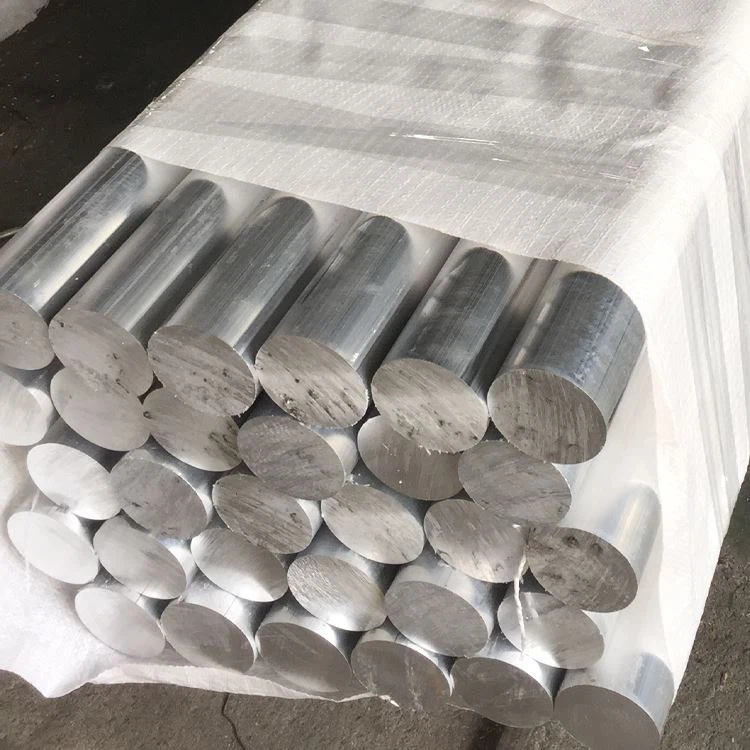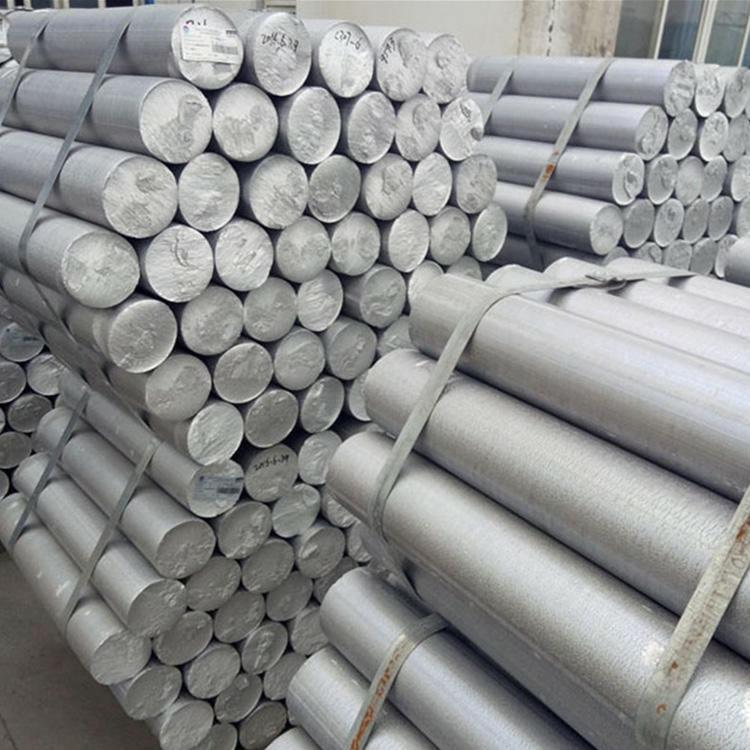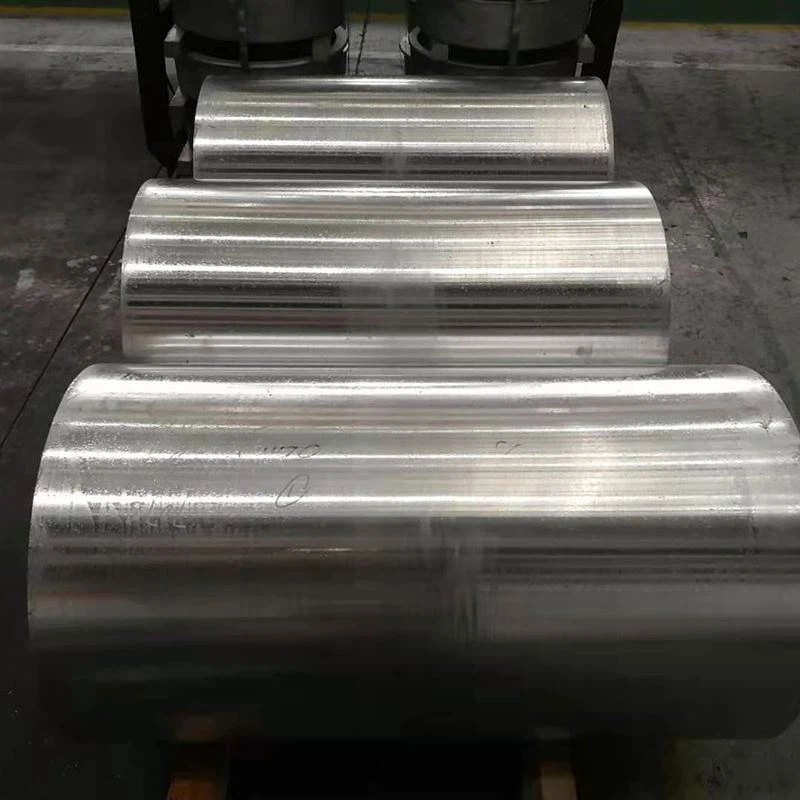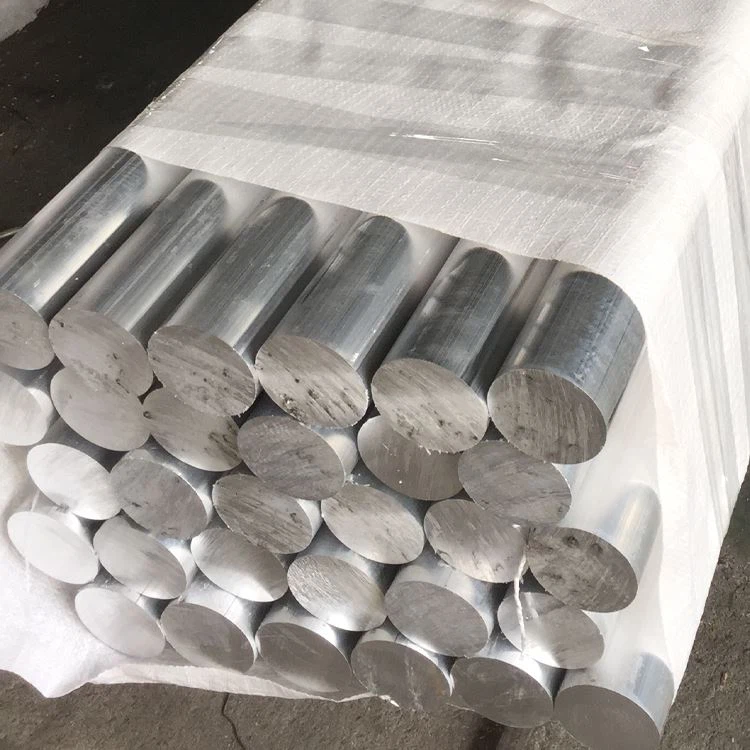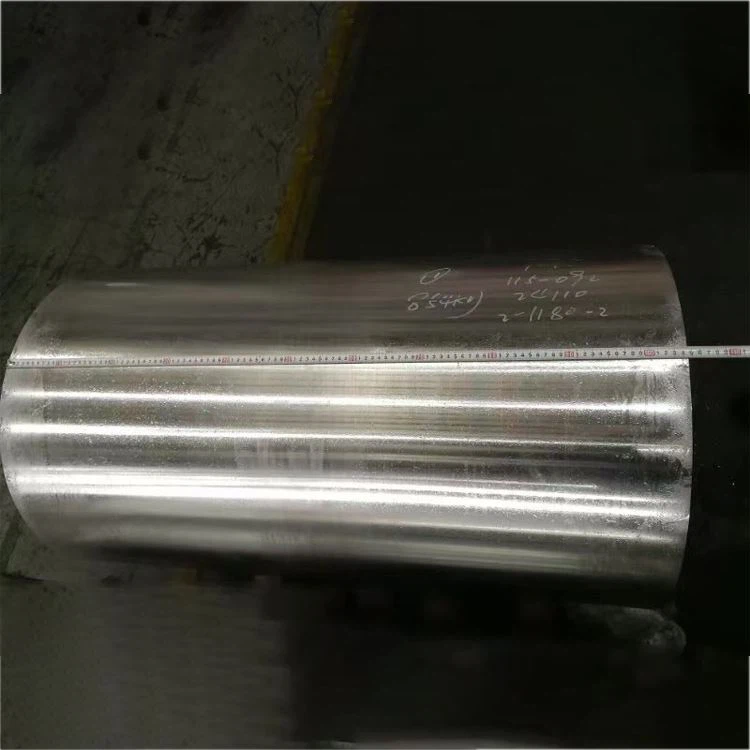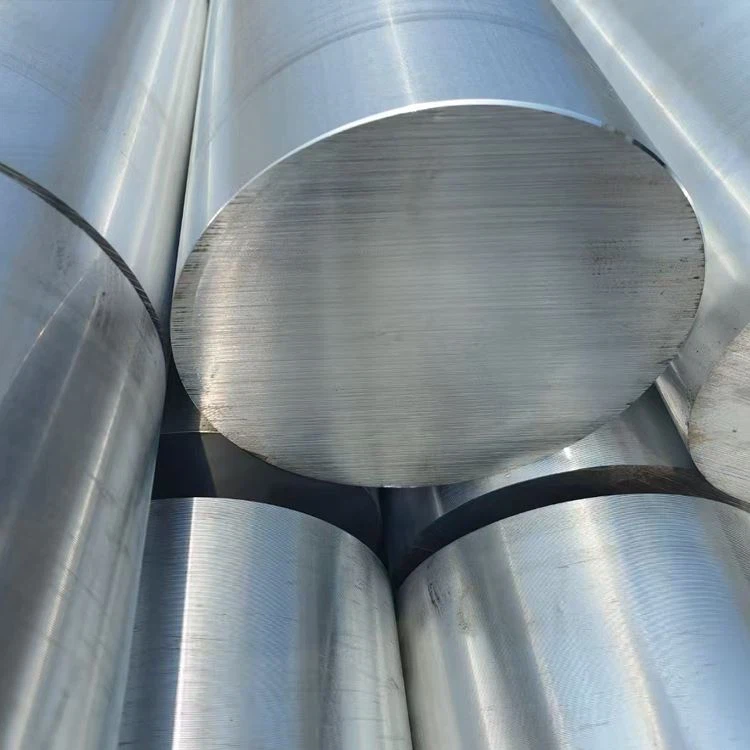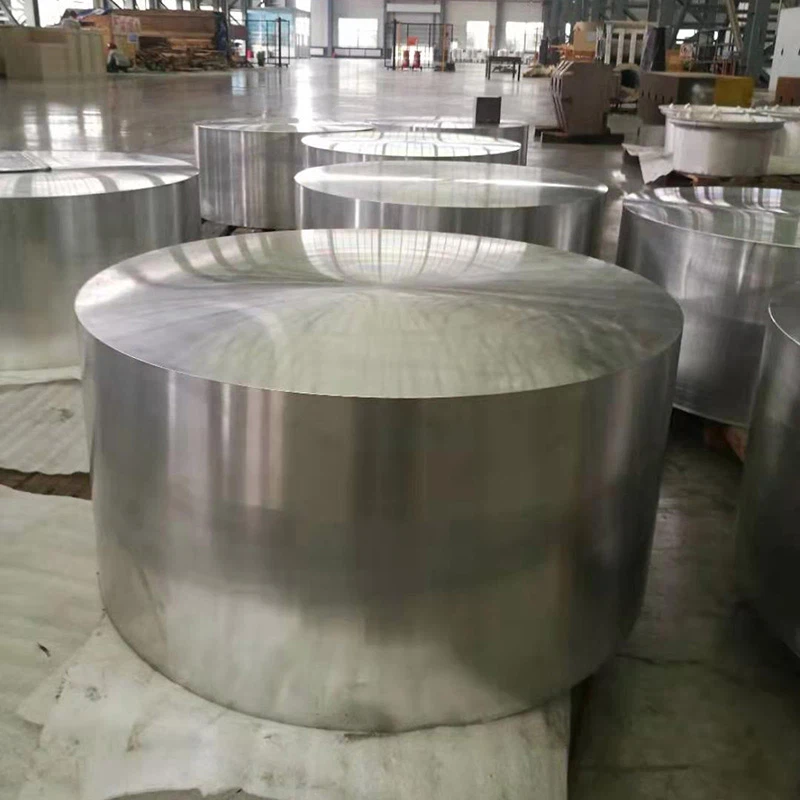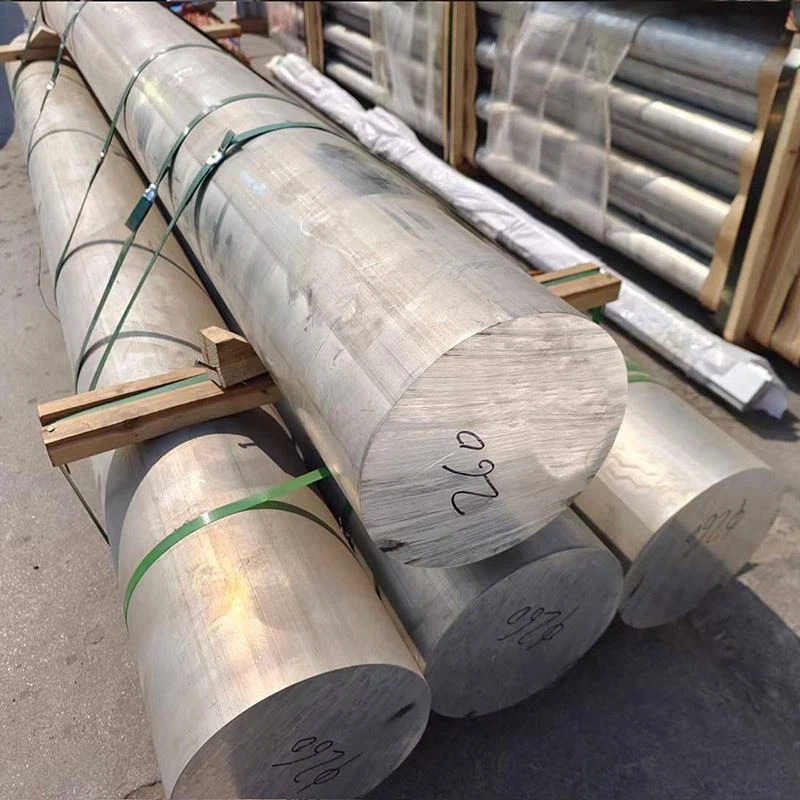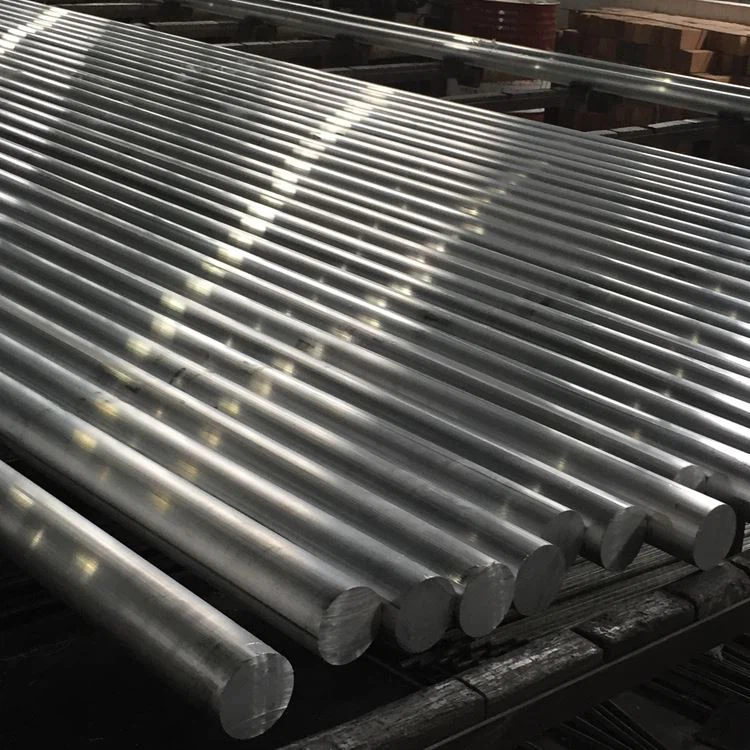1. Material Composition & Manufacturing Process
5083 aluminum alloy is a high-performance non-heat-treatable Al-Mg alloy renowned for its exceptional strength, weldability, and superior corrosion resistance in marine environments. The round bar configuration offers optimized properties for critical structural and marine applications:
Primary Alloying Elements:
Magnesium (Mg): 4.0-4.9% (solid solution strengthening)
Manganese (Mn): 0.4-1.0% (grain structure control)
Chromium (Cr): 0.05-0.25% (corrosion resistance enhancement)
Base Material:
Aluminum (Al): ≥92.4% (balance)
Controlled Impurities:
Iron (Fe): ≤0.40% max
Silicon (Si): ≤0.40% max
Copper (Cu): ≤0.10% max
Zinc (Zn): ≤0.25% max
Titanium (Ti): ≤0.15% max
Other elements: ≤0.05% each, ≤0.15% total
Premium Manufacturing Process:
Melt Preparation:
Primary high-purity aluminum (99.7% minimum)
Precise alloying element additions
Melt filtration through ceramic foam filters (20-30 ppi)
Advanced degassing treatment (hydrogen < 0.1 ml/100g)
Grain refinement with Al-Ti-B master alloy
Direct-chill (DC) semi-continuous casting
Homogenization:
450-480°C for 8-16 hours
Uniform temperature control: ±5°C
Controlled cooling rate: 25-40°C/hour
Mn-dispersoid optimization
Hot Working:
Initial breakdown: 380-420°C
Intermediate rolling/forging: 350-400°C
Final hot working: 320-370°C
Careful temperature control to prevent cracking
Cold Working:
H111: Minimal strain hardening after hot working
H112: Slightly strained during production
H116: Marine-optimized temper
H32: Quarter-hard condition (strain hardened)
Finishing:
Surface conditioning
Precision straightening
Stress relieving treatment for H32 temper
Dimensional verification
Surface quality inspection
Full manufacturing traceability with comprehensive documentation for critical applications.
2. Mechanical Properties of 5083 Aluminum Round Bar
| Property | H111 (min) | H111 (typical) | H32 (min) | H32 (typical) | Test Method |
| Ultimate Tensile Strength | 275 MPa | 290-310 MPa | 305 MPa | 315-335 MPa | ASTM E8 |
| Yield Strength (0.2%) | 125 MPa | 130-150 MPa | 215 MPa | 225-245 MPa | ASTM E8 |
| Elongation (2 inch) | 16% | 18-22% | 10% | 12-16% | ASTM E8 |
| Hardness (Brinell) | 75 HB | 75-85 HB | 85 HB | 85-95 HB | ASTM E10 |
| Fatigue Strength (5×10⁸) | 125 MPa | 130-145 MPa | 140 MPa | 145-160 MPa | ASTM E466 |
| Shear Strength | 170 MPa | 175-190 MPa | 185 MPa | 190-205 MPa | ASTM B769 |
| Compressive Yield Strength | 130 MPa | 135-155 MPa | 220 MPa | 230-250 MPa | ASTM E9 |
| Modulus of Elasticity | 71.0 GPa | 71.0 GPa | 71.0 GPa | 71.0 GPa | ASTM E111 |
Property Distribution:
Longitudinal to transverse property ratio: 1.00:0.90-0.95
Variation across diameter: <3% for bars up to 100mm, <5% for bars >100mm
Core to surface hardness variation: <5 HB
Property retention after welding: Superior compared to heat-treatable alloys
3. Microstructural Characteristics
Key Microstructural Features:
Grain Structure:
Equiaxed grains in annealed condition
Elongated grains in strain-hardened tempers
ASTM grain size 6-8 (45-22μm)
Uniform grain distribution across section
Precipitate Distribution:
Al₆Mn dispersoids: 50-200nm, uniform distribution
Al₈Mg₅ beta phase: Controlled volume fraction
Al-Fe-Mn intermetallics: Refined distribution
Cr-rich dispersoids: Enhances recrystallization control
Texture Development:
Moderate deformation texture in H32 temper
Near-random orientation in H111 condition
Controlled directionality for optimal properties
Special Features:
Fine Mg₂Si precipitates at grain boundaries
Absence of PFZs (precipitate-free zones)
Low dislocation density in H111 condition
Higher dislocation density in H32 temper
4. Dimensional Specifications & Tolerances
| Parameter | Standard Range | Precision Tolerance | Commercial Tolerance | Test Method |
| Diameter | 10-500 mm | ±0.20mm up to 30mm | ±0.30mm up to 30mm | Micrometer |
| ±0.6% above 30mm | ±1.0% above 30mm | |||
| Ovality | N/A | 50% of diameter tolerance | 75% of diameter tolerance | Micrometer |
| Length | 2000-6500 mm | ±3mm | ±6mm | Tape measure |
| Straightness | N/A | 0.5mm/m | 1.0mm/m | Straightedge |
| Surface Roughness | N/A | 3.2 μm Ra max | 6.3 μm Ra max | Profilometer |
| Cut End Squareness | N/A | 0.5° max | 1.0° max | Protractor |
Standard Available Forms:
Round Bar: Diameters 10-500mm
Cut-to-length service available
Special tolerances available upon request
Precision ground bars for critical applications
Custom lengths and surface finishes available
5. Temper Designations & Strain Hardening Options
| Temper Code | Process Description | Optimal Applications | Key Characteristics |
| F | As fabricated | Non-critical applications | No mechanical property guarantees |
| O | Annealed, softened | Applications requiring maximum formability | Maximum ductility, lowest strength |
| H111 | Slightly strain hardened beyond O | Marine structural components | Good balance of strength and formability |
| H112 | Strain hardened from shaping processes | General purpose structural applications | Slightly higher strength than H111 |
| H116 | Marine temper | Marine and offshore applications | Optimized for seawater corrosion resistance |
| H32 | Strain hardened and partially annealed | High-strength applications | Higher strength with moderate ductility |
Temper Selection Guidance:
H111/H112: General purpose marine applications
H116: Critical marine exposure applications
H32: Higher strength requirements
O: Maximum formability applications
6. Machining & Fabrication Characteristics
| Operation | Tool Material | Recommended Parameters | Comments |
| Turning | Carbide, PCD | Vc=200-450 m/min, f=0.1-0.4 mm/rev | Good chip breaking with proper tooling |
| Drilling | HSS-Co, Carbide | Vc=60-120 m/min, f=0.15-0.35 mm/rev | Good hole quality, moderate build-up edge |
| Milling | Carbide, PCD | Vc=250-600 m/min, fz=0.1-0.25 mm | Use climb milling for best finish |
| Tapping | HSS, TiCN coated | Vc=15-25 m/min | Good thread quality with proper lubrication |
| Reaming | Carbide, PCD | Vc=40-100 m/min, f=0.2-0.5 mm/rev | H8 tolerance achievable |
| Sawing | Carbide-tipped | Vc=1500-2500 m/min | Moderate tooth pitch for best results |
Fabrication Guidance:
Machinability Rating: 60% (1100 aluminum = 100%)
Surface Finish: Good (Ra 1.6-3.2μm readily achievable)
Chip Formation: Long, stringy chips; chip breakers recommended
Coolant: Water-soluble emulsion preferred (8-10% concentration)
Tool Wear: Moderate with proper parameters
Weldability: Excellent with TIG, MIG, and friction stir welding
Cold Working: Good formability in O/H111 condition
Hot Working: 350-450°C recommended temperature range
Cold Bending: Minimum radius 1× diameter (O temper), 1.5× diameter (H temper)
7. Corrosion Resistance & Protection Systems
| Environment Type | Resistance Rating | Protection Method | Expected Performance |
| Industrial Atmosphere | Very Good | Clean surface | 10-15+ years |
| Marine Atmosphere | Excellent | Clean surface | 15-20+ years |
| Seawater Immersion | Very Good | Cathodic protection | 10-15+ years with maintenance |
| High Humidity | Excellent | Standard cleaning | 20+ years |
| Stress Corrosion | Excellent in H116 | Proper temper selection | Superior to 6xxx series |
| Exfoliation | Excellent | Proper temper selection | Superior to 6xxx series |
Surface Protection Options:
Anodizing:
Type II (Sulfuric): 10-25μm thickness
Type III (Hard): 25-75μm thickness
Note: May slightly reduce corrosion resistance in marine environments
Mechanical Finishing:
Polishing: Enhanced appearance and reduced corrosion initiation sites
Glass bead blasting: Uniform matte appearance
Painting Systems:
Epoxy primer + polyurethane topcoat
Marine-grade systems available
Specialized Marine Protection:
Impressed current cathodic protection
Sacrificial anodes (zinc or aluminum)
8. Physical Properties for Engineering Design
| Property | Value | Design Consideration |
| Density | 2.66 g/cm³ | Weight calculation for marine components |
| Melting Range | 574-638°C | Welding parameters |
| Thermal Conductivity | 117-121 W/m·K | Thermal management design |
| Electrical Conductivity | 28-32% IACS | Electrical applications design |
| Specific Heat | 900 J/kg·K | Thermal mass calculations |
| Thermal Expansion (CTE) | 23.8 ×10⁻⁶/K | Thermal stress analysis |
| Young’s Modulus | 71.0 GPa | Deflection and stiffness calculations |
| Poisson’s Ratio | 0.33 | Structural analysis parameter |
| Damping Capacity | Better than 6xxx/7xxx series | Vibration-sensitive applications |
Design Considerations:
Operating Temperature Range: -196°C to +200°C
Cryogenic Performance: Excellent (increased strength at low temperatures)
Corrosion Allowance: Typically 0.15mm/year in marine environments
Galvanic Compatibility: Isolation recommended with carbon steel
Magnetic Properties: Non-magnetic
Low-temperature impact resistance: Excellent (no ductile-to-brittle transition)
9. Quality Assurance & Testing
Standard Testing Procedures:
Chemical Composition:
Optical emission spectroscopy
Verification of all major elements and impurities
Mechanical Testing:
Tensile testing (longitudinal and transverse)
Hardness testing (Brinell)
Dimensional Inspection:
Diameter measurements at multiple locations
Straightness verification
Ovality measurement
Visual Inspection:
Surface defects assessment
Finish quality verification
Specialized Testing (When Required):
Ultrasonic inspection per ASTM E114
Corrosion testing (ASTM G67 for exfoliation)
Intergranular corrosion testing (ASTM G66)
Stress corrosion testing (ASTM G47)
Standard Certifications:
Mill Test Report (EN 10204 3.1)
Chemical analysis certification
Mechanical properties certification
Dimensional inspection report
Material traceability documentation
10. Applications & Design Considerations
Primary Applications:
Marine Engineering:
Ship propeller shafts
Rudder stocks and pintles
Marine hardware components
Offshore platform components
Transportation:
Naval and coast guard vessel structures
High-speed ferry components
Shipbuilding structural elements
Submarine components
Industrial Components:
Chemical processing equipment
Pressure vessels for marine environments
Cryogenic applications
Highly corrosive environment components
Defense Applications:
Naval gun mounts
Ammunition handling equipment
Radar and sensor support structures
Torpedo components
Specialized Uses:
Bolts and fasteners for marine use
Valve stems and components
Nuclear industry components
Desalination plant components
Design Advantages:
Exceptional corrosion resistance in marine environments
Excellent weldability without post-weld heat treatment
Superior stress corrosion cracking resistance
Good strength retention at cryogenic temperatures
Non-sparking properties for explosive environments
Excellent fatigue properties
Good machinability for complex components
Excellent formability in annealed condition
High strength-to-weight ratio
Proven history in demanding marine applications
Design Limitations:
Lower strength compared to 7xxx and 2xxx series
Not heat-treatable for strength enhancement
Higher cost than general-purpose alloys
Limited availability in very large diameters
Work hardening during fabrication must be considered
Limited high-temperature strength above 200°C
Economic Considerations:
Higher initial cost offset by long service life
Reduced maintenance costs in marine environments
Better life-cycle cost compared to stainless steel alternatives
Excellent recyclability and scrap value
Lower fabrication costs compared to titanium alternatives

